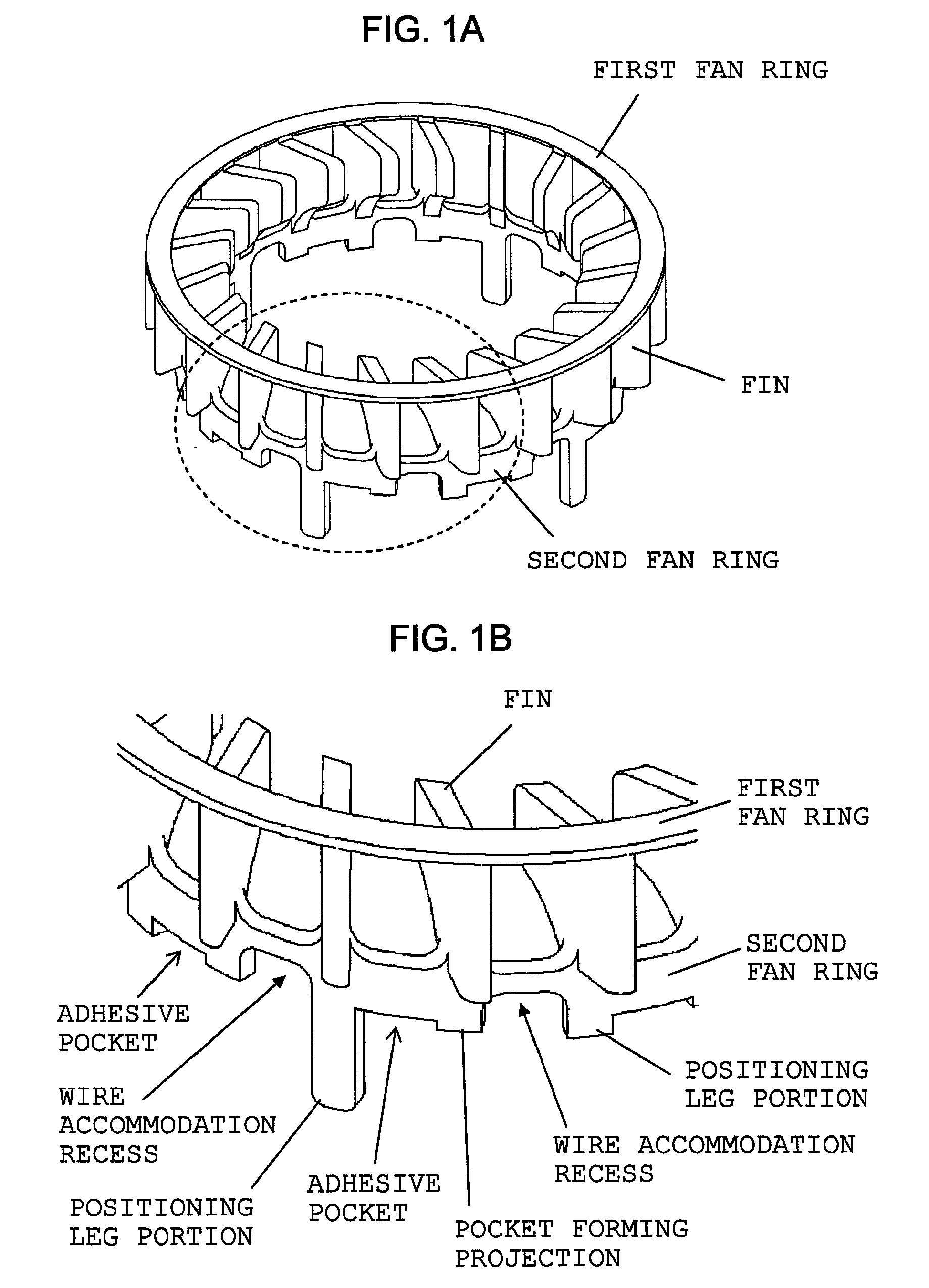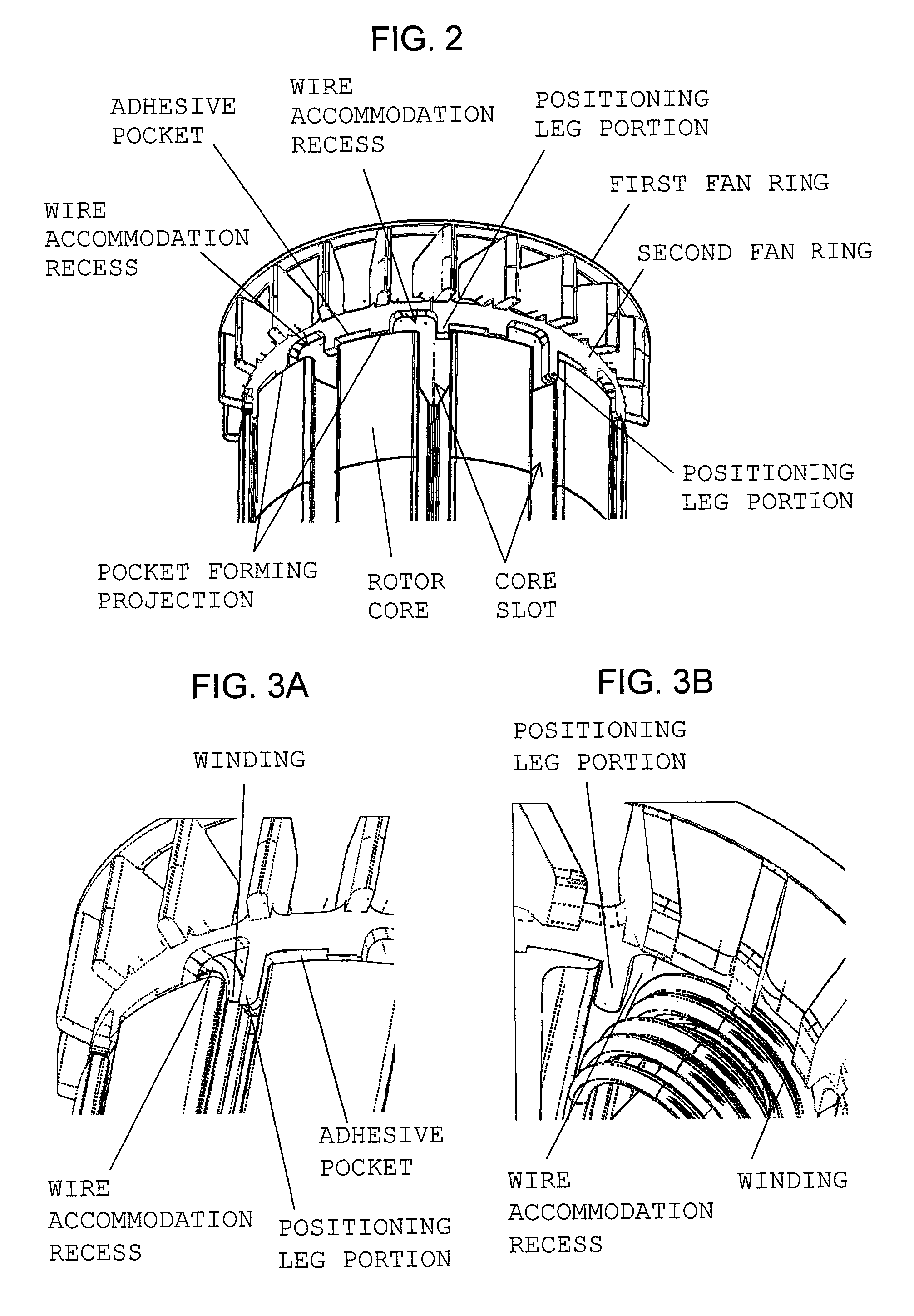Cooling fan built into rotor
a cooling fan and rotor technology, applied in the direction of piston pumps, vessel construction, marine propulsion, etc., can solve the problems of limiting the performance of the motor, affecting the winding range, and generating heat, so as to improve the winding range, improve the motor performance, and improve the effect of the motor performan
- Summary
- Abstract
- Description
- Claims
- Application Information
AI Technical Summary
Benefits of technology
Problems solved by technology
Method used
Image
Examples
Embodiment Construction
[0025]The present invention will now be described by way of examples. FIG. 1A is a perspective view showing a first example cooling fan configured in accordance with the present invention, and FIG. 1B is an enlarged view of a portion of FIG. 1A within a broken-line circle. The cooling fan is integrally formed of, for example, a synthetic resin such that a plurality of fins are disposed between and connected to first and second fan rings separated from each other along an axial direction. When the cooling fan is attached to the rotor, the first fan ring is located radially outward of an end portion of a commutator, so that a clearance is provided between the first fan ring and an outer circumferential surface of the commutator so as to allow air to flow through the clearance. The second fan ring has an end surface facing a thrust direction (parallel to the axial direction of a motor shaft), and the end surface is bonded to an end surface of a rotor core near the outer circumference t...
PUM
 Login to View More
Login to View More Abstract
Description
Claims
Application Information
 Login to View More
Login to View More - R&D
- Intellectual Property
- Life Sciences
- Materials
- Tech Scout
- Unparalleled Data Quality
- Higher Quality Content
- 60% Fewer Hallucinations
Browse by: Latest US Patents, China's latest patents, Technical Efficacy Thesaurus, Application Domain, Technology Topic, Popular Technical Reports.
© 2025 PatSnap. All rights reserved.Legal|Privacy policy|Modern Slavery Act Transparency Statement|Sitemap|About US| Contact US: help@patsnap.com



